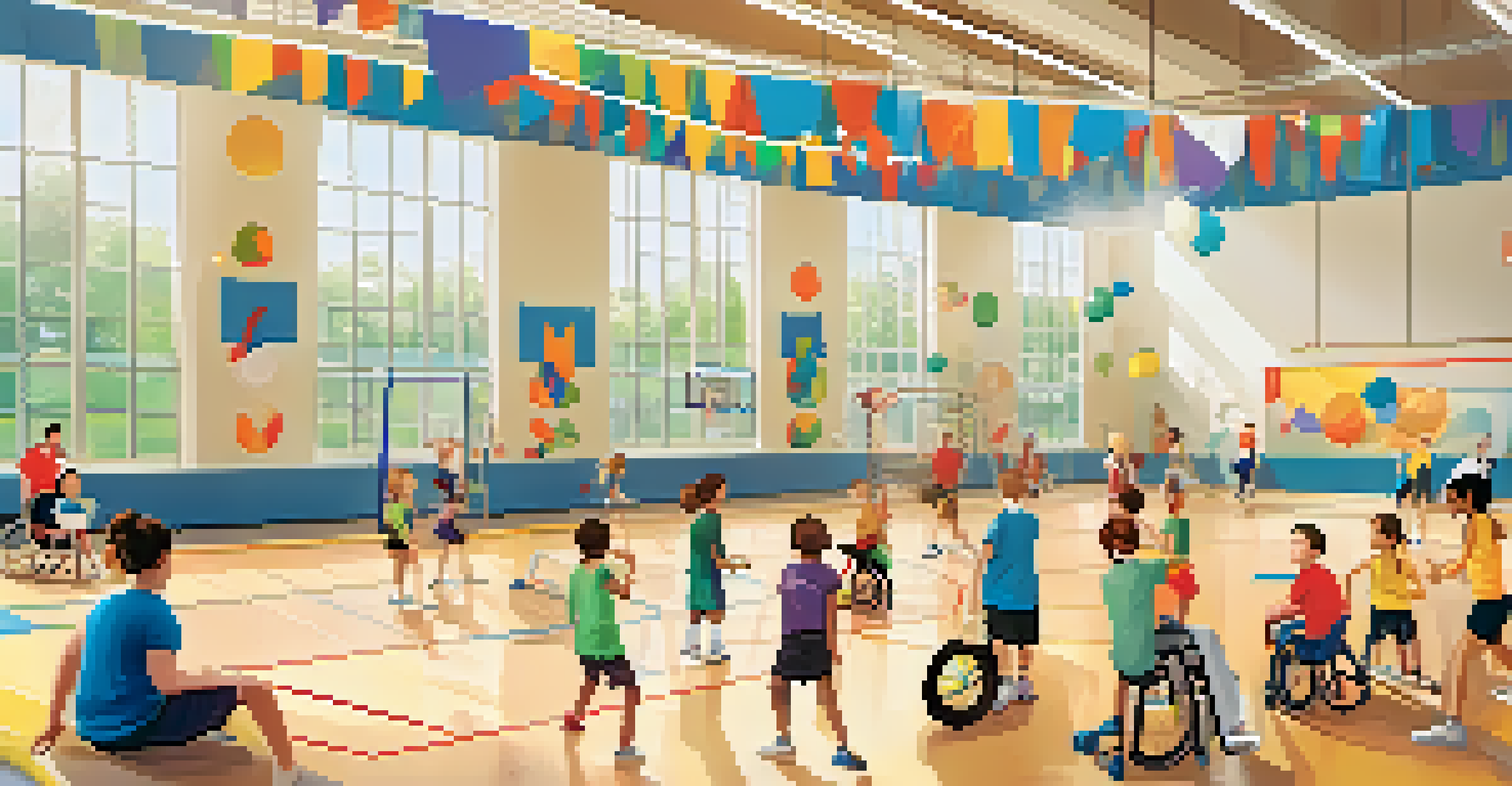Physical Education: Essential for Children's Health

The Importance of Physical Activity for Kids
Physical activity is crucial for children's growth and development. It helps build strong bones and muscles, as well as improve cardiovascular fitness. Engaging in regular movement not only promotes physical health but also enhances emotional wellbeing.
Physical activity is the key to a healthy lifestyle, promoting both physical and mental well-being.
Children who participate in physical education tend to perform better academically. Activities that get their heart rates up can lead to improved concentration and cognitive function. Think of it as a natural brain booster, helping kids to focus better in the classroom.
Moreover, physical activity helps in developing social skills. When children play team sports or participate in group exercises, they learn teamwork, leadership, and communication skills—qualities that are essential for their future.
Addressing Childhood Obesity Through PE
One of the most pressing health issues facing children today is obesity. Physical education plays a key role in combating this epidemic by encouraging kids to be active and make healthier lifestyle choices. Regular exercise can help maintain a healthy weight and prevent future health problems.

Incorporating fun activities into PE classes can spark a lifelong love for movement. Whether it's through dance, sports, or fitness games, making exercise enjoyable is crucial for keeping children engaged. This way, they’re more likely to carry those habits into adulthood.
Physical Activity Boosts Wellbeing
Regular physical activity enhances children's physical health, emotional wellbeing, and academic performance.
Schools that prioritize physical education create an environment that promotes health and wellbeing. By fostering a culture of activity, they not only tackle obesity but also lay the foundation for healthier generations.
Boosting Mental Health with Exercise
Physical activity is a powerful tool for combating stress and anxiety in children. Exercise releases endorphins, the body's natural mood lifters, which can help kids feel happier and more relaxed. This can be especially beneficial during stressful times, such as exams.
Exercise is not just about the body; it is also about the mind. A healthy mind supports a healthy body.
In addition to reducing anxiety, regular movement can improve self-esteem. When children participate in sports or physical activities, they often experience a sense of accomplishment, which can bolster their confidence. This newfound self-assurance can positively impact other areas of their lives.
Furthermore, physical education can serve as a safe space for children to express themselves. It provides an opportunity to channel emotions and energy in a constructive way, fostering resilience and emotional intelligence.
Building Lifelong Habits through PE
Physical education is not just about immediate benefits; it’s about instilling lifelong habits. By introducing children to various forms of exercise, they can discover what they enjoy and continue those activities as adults. This foundation can lead to a healthier, more active lifestyle in the long run.
Educators and parents play a vital role in encouraging these habits. By promoting physical activity outside of school—such as family hikes or sports—children learn that being active can be fun and rewarding. This makes it easier for them to carry those habits into their adult lives.
Combatting Childhood Obesity
Physical education plays a crucial role in addressing childhood obesity by promoting active lifestyles and healthier choices.
Ultimately, the goal of physical education is to create a culture of health that lasts a lifetime. When children view exercise as a normal part of their routine, they’re more likely to prioritize their health as they grow.
The Role of Technology in Physical Education
In today's digital age, technology can enhance physical education in exciting ways. From fitness apps to virtual reality workouts, tech can motivate kids to stay active and engaged. These tools make exercise more accessible and can even introduce children to new activities they might not try otherwise.
Moreover, technology can help track progress and set goals. When kids can see their achievements through apps or wearable devices, it encourages them to push themselves further. This data-driven approach can foster a sense of accountability and motivation.
However, it's important to balance screen time with physical activity. While technology can be a valuable ally, encouraging outdoor play and traditional sports remains crucial for holistic development.
Inclusive PE: Ensuring Everyone Can Participate
An effective physical education program is one that includes all children, regardless of their abilities. Inclusivity in PE ensures that every child has the opportunity to be active and develop their skills. This fosters a sense of belonging and community among students.
By adapting activities to meet diverse needs, educators can create a more engaging environment. For instance, modified games or alternative sports can accommodate different skill levels, ensuring that every child can participate and enjoy physical activity.
Inclusive PE for All Kids
An effective physical education program fosters inclusivity, allowing children of all abilities to participate and develop essential social skills.
When children see their peers engaging in physical education, it promotes empathy and understanding. This not only enhances social bonds but also helps reduce bullying and isolation, creating a more harmonious school environment.
The Future of Physical Education in Schools
As we move forward, the landscape of physical education is evolving. Schools are increasingly recognizing the importance of a well-rounded curriculum that includes physical activity. This shift is essential for addressing current health challenges and promoting overall wellbeing.
Innovative programs and partnerships with local organizations can enhance PE offerings. Collaborations with community sports teams or wellness centers can provide children with diverse opportunities to explore and engage in different physical activities.

Ultimately, the future of physical education lies in its ability to adapt and meet the needs of today's children. By embracing new ideas and technologies, we can ensure that physical education remains a vital part of every child's education.